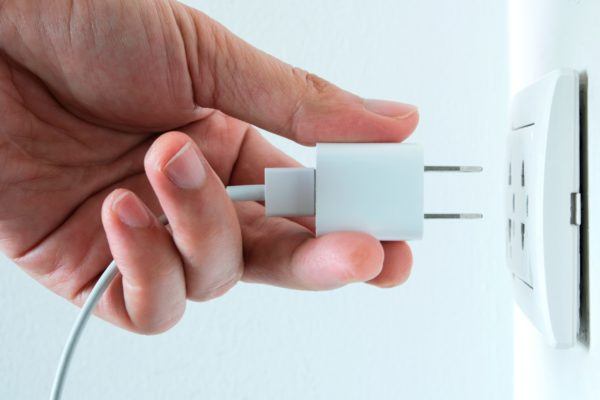
Short circuits are not just a spark or a glitch. They involve a complex interaction of currents that can lead to unexpected consequences. Join us as we navigate the details of short circuits, uncovering their causes and effects and the valuable insights they provide into the fascinating realm of electrical connections.
What Is a Short Circuit?
A short circuit occurs when an unintended low-resistance pathway is formed in an electrical circuit, allowing current to flow outside its intended route. This phenomenon results from a breach in isolation between conductive elements. It often leads to unintended consequences, including sparks, momentary glitches, and potentially harmful power surges. It can even lead to equipment failure or electrical fires in extreme cases.
In a standard circuit, electrical current flows through a continuous and controlled pathway that includes components like resistors, capacitors, and other devices that regulate the flow of electricity. However, in the event of a short circuit, a low-resistance pathway that redirects the current’s route is created, resulting in excessive current flow.
Types of Short Circuits
Short circuits can be classified into different types based on their causes and effects. Below are some of the most common types of short circuits.
Ground Fault
A ground fault occurs when a live wire comes into contact with a ground conductor or a conductive surface. This is often caused by damaged wiring or insulation breakdown. It is worth noting that ground faults pose a serious electrocution risk, making them a critical safety concern.
Line-to-Line Fault
A line-to-line fault occurs when two distinct live conductors come into contact. This contact creates a low-resistance path that allows current to flow directly between the conductors, bypassing the standard load or impedance in the circuit.
Phase-to-Ground Short Circuit
A phase-to-ground short circuit occurs when a live conductor comes into contact with the ground or a ground conductor. It can result in an unbalanced distribution of current, potential equipment damage, and safety hazards.
Hard Short Circuit
A hard short circuit, also known as a “dead short,” occurs when two conductive elements with very low resistance come into direct contact, bypassing the intended circuit elements. This results in a sudden surge of current, potentially leading to sparks, overheating, and circuit damage.
Causes of Short Circuits
Short circuits can be caused by various factors, including the unintended bridging of conductive elements within an electrical circuit. These factors can disrupt the normal flow of electricity and lead to potentially hazardous situations. Here are some common causes of short circuits:
Physical Damage
Accidents, wear and tear, or improper handling during installation may cause wires to become frayed, insulation to be compromised, or conductors to come into direct contact.
Poor Insulation
If the insulation between conductive elements is insufficient or has deteriorated, it can lead to direct contact and the creation of a short circuit. This can happen gradually due to factors such as heat, humidity, or exposure to chemicals.
Manufacturing Defects
Poorly manufactured electronic components or devices can have internal defects that cause unintended connections between conductive paths. This might occur due to errors in soldering, improper component placement, or contamination during manufacturing.
Overloading
If you use more current than a circuit is designed to handle, it may generate excessive heat. This heat has the potential to melt insulation, cause wires to touch, or damage components, which could ultimately lead to a short circuit.
Moisture and Contaminants
When moisture, water, or conductive contaminants get into a circuit, it can create a path for current to flow where it shouldn’t, causing a short circuit. This can be especially troublesome in areas with high humidity levels.
Loose Connections
Loose connections within a circuit, such as loose wires in electrical outlets or terminal blocks, can create intermittent or constant contact between conductors, causing short circuits.
Component Failures
Malfunctioning or damaged components within a circuit, such as transistors, diodes, capacitors, and integrated circuits, can create unintended pathways for current to flow, leading to short circuits.
External Factors
Disruptions in circuit operations and possible short circuits can occur due to external factors such as electromagnetic interference (EMI), radio frequency interference (RFI), and voltage spikes.
Animals and Pests
When small animals, insects, or pests get into electrical enclosures or wiring systems, they may accidentally cause short circuits by creating connections between conductors.
Wiring Errors
Improper electrical installation, maintenance, or repairs can result in the creation of unintended current paths, causing short circuits. This can occur when mismatched wire colors or incorrect wiring techniques are used.
How to Prevent Short Circuits
Preventing short circuits is essential to maintaining the safety, functionality, and longevity of your electrical system. Here are some practical steps you can take to avoid short circuits.
Quality Components
It is recommended to use electrical components, wires, cables, and connectors that meet safety standards and are capable of withstanding the intended conditions of use. It is also advisable to opt for high-quality products to ensure safety and reliability.
Proper Insulation
To make sure your Fox Valley home is safe, it’s important to properly insulate all wires and conductive elements with appropriate materials. Proper insulation helps prevent accidental contact between conductors.
Circuit Design
You should ensure there is sufficient space between electrical components and conductors to minimize the risk of contact and short circuits. Also, avoid tight bends and sharp angles in wiring.
Professional Installation
It is best to have electrical installations and repairs performed by qualified electricians who are experienced in proper wiring techniques and safety practices.
Secure Wiring
Wires and cables should be secured and fastened to prevent them from moving or coming into contact with other components, surfaces, or objects that can cause a short circuit.
Regular Maintenance
You can have our electricians inspect your electrical systems to identify and address any signs of wear, damage, or degradation that could lead to short circuits.
GFCIs and AFCIs
Install ground fault circuit interrupters (GFCIs) in areas with potential exposure to water and arc fault circuit interrupters (AFCIs) to detect arcing faults. These devices can quickly shut off power in the event of a power surge.
Circuit Protection
Use appropriate fuses, circuit breakers, and surge protectors to safeguard against overcurrent and overvoltage. Ensure that these devices are correctly rated for the circuit’s load.
Labeling
It is important to correctly identify and label circuits and electrical panels in order to clearly indicate their purpose and the components they contain. This helps prevent accidental cross-connections during maintenance or repairs.
Avoid Overloading
Do not overload circuits by connecting too many devices or appliances to a single circuit. Instead, distribute loads evenly and use separate circuits for high-power equipment so as to ensure safety and proper functioning.
Secure Enclosures
Keep electrical enclosures closed and secured to prevent dust, debris, moisture, and pests from entering and causing short circuits.
Inspection Before Use
Before plugging in or using any electrical equipment, visually inspect cords, plugs, and connectors for damage. If you notice any damage, replace the damaged components to ensure safety.
Environmental Considerations
When it comes to your electrical equipment, it’s crucial to consider its surroundings. To ensure it operates correctly, be sure to install suitable covers, shielding, and protection in any areas where the equipment may come into contact with moisture, dust, or extreme temperatures.
Your Go-To Electrical Company
Looking for a reliable electrical company? Look no further than Black-Haak. Our team of skilled professionals has extensive expertise and experience in various aspects of electrical work, including installations, repairs, troubleshooting, and maintenance. We also offer heating and cooling services, including the installation, repair, and maintenance of furnaces, air conditioners, and ductless mini-splits. As a BBB-accredited company, we prioritize safety protocols and strictly adhere to established safety standards and guidelines. Our technicians are proficient in accurately diagnosing issues and proposing effective solutions. We use top-quality materials and components in all our projects, ensuring the longevity and reliability of your electrical system.
Don’t let short circuits compromise your safety or disrupt your electronics! Contact Black-Haak today for the best electrical services in Fox Valley, WI.

